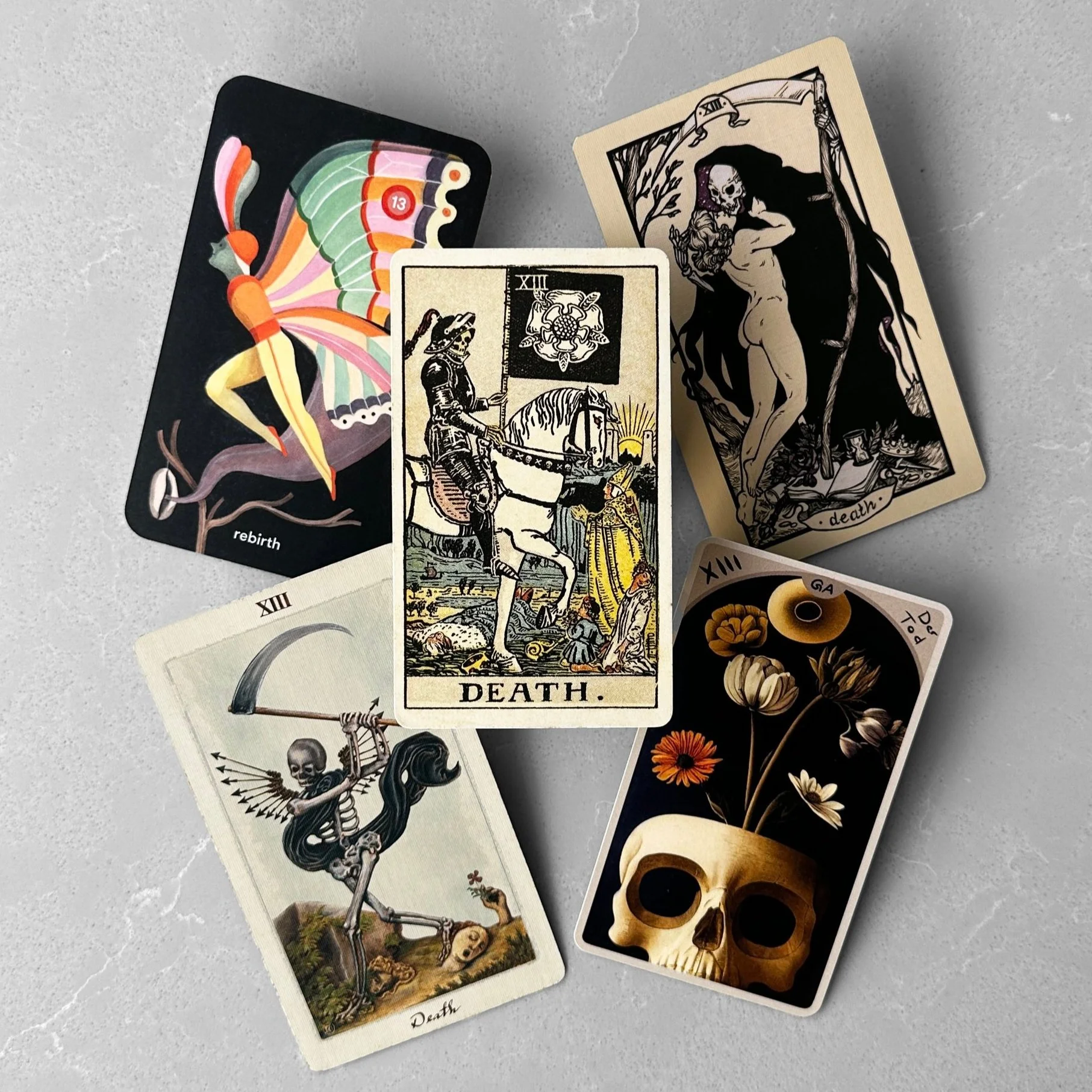Riding with Death
Charting the course with card 13.
"God, grant me the serenity to accept the things I cannot change, the courage to change the things I can, and the wisdom to know the difference." — “Prayer for Serenity” / Reinhold Niebuhr, Lutheran theologian (1892–1971)
If you're a Tarot reader who frequently interacts with the general public, I'm almost certain that the question, "I'm too scared to get a reading. What if I get the Death card?" will have come up at least once or twice in your practice. Sadly, pop culture, the media, and quite a few bad apples have distorted the meaning of card thirteen, portraying it as a harbinger of danger, pain, or even physical death. In my opinion, Death gets a bad rap and puts unjust pressure on the reader to sugar-coat or overly index the positivity of this card. Essentially, it can short-circuit a reading.
Similarly, the month of January also gets a bad rap. Most of us are encouraged to compile a list of resolutions or intentions that pile on unnecessary pressure as we begin the new year. As much as goal-setting can be a healthy exercise rooted in the desire to become a more elevated human being—a better version of ourselves—forgetting to consider where we have failed in the past more often than not sets us up for another round of failure.
XIII. Death. Clockwise from top left: Tarot for All Ages, Smith-Waite Centennial, Fyodor Pavlov Tarot, Habetrot Traum Tarot, Pagan Otherworlds.
As 2024 begins to settle in with us, reflecting on the things we cannot change or influence could be a more effective way to start understanding our year ahead. Perhaps instead of building a list of resolutions we may or may not keep, looking back over our perceived "failures" or "missteps" of 2023 could be more impactful for us, informing us of what we'd like to tackle throughout the duration of the year as a whole.
This is where Death comes in handy.
In his book, "Tarot: Mirror of the Soul," Gerd Ziegler reminds us that Death "generally points to radical external transformation. The act of letting go, difficult as it may be, will liberate [us]." He also goes on to say that Death shows us "...two faces; one destroying and tearing down, the other freeing [us] from old bonds which have become confining, preventing life." If we apply Ziegler's thinking to our previous year, the line between what we should continue doing and what we can move beyond becomes clearer and more precise.
In the Waite-Smith system, Death rides into frame on a white horse, not unlike the Four Knights, almost as if he has an important message to deliver. Decked in black armor and carrying the flag of Pamela Colman Smith’s death flower, he comes to greet what appears to be a priest, cardinal, or another religious figure and delivers a simple message: No one can escape the end.
Death created with the help of artificial intelligence.
However, this doesn’t seem to go over easily with the religious figure. Oh no. Often a symbol of structure, power, and certainty, this character begs Death for mercy, expressing the desire to stay on Earth to uphold the status quo. However, he can’t bypass this natural occurrence. His time is up, and a transformation is on the horizon, whether he accepts it or not.
By challenging ourselves to work with Death, rather than against it like the cardinal, our 2024 could shape up to be something beyond transformative and more transcendent. If we allow ourselves to release the things of the past year that haven’t served us or provided opportunities for success, we can rise.
In her influential book "78 Degrees of Wisdom," the great Rachel Pollock writes that "[d]eath leads to resurrection," and the same could be said for us in 2024. While embracing the potential for renewal, let us come alive through death, releasing the grip of the past and letting transformation unfold into new opportunities, wisdom, and a more fulfilling journey in the year ahead.


